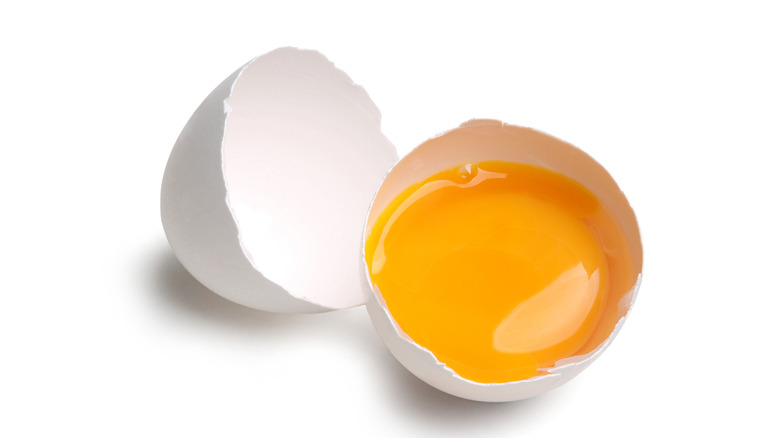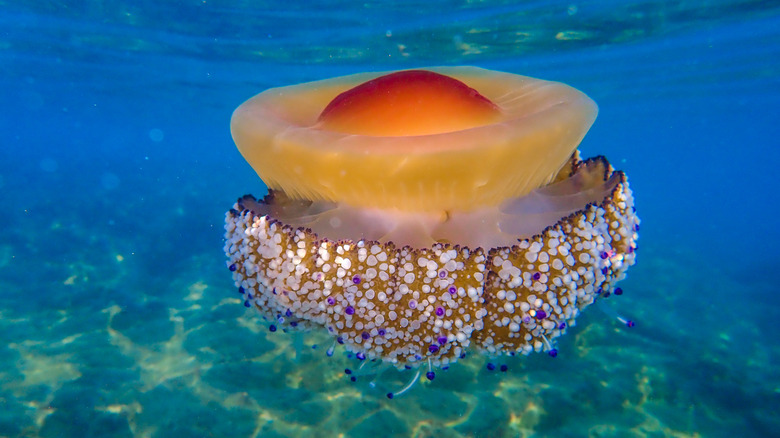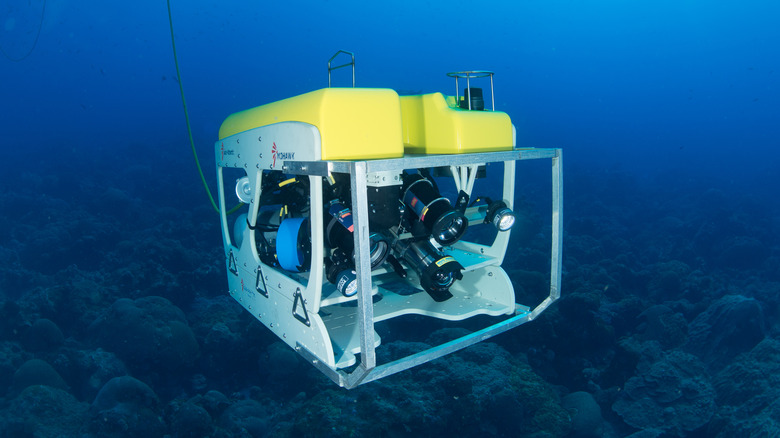Here's What Happens When You Crack An Egg Underwater
While people are still debating what truly came first, the chicken or the egg, scientists have been able to answer another egg-related query: What happens to eggs when you crack them underwater? When you consider the fact that nearly three-quarters of the Earth's surface is comprised of oceans, but only 5% of those oceans have been explored, it's no wonder there's a wealth of deep-sea curiosity (via Science Friday). It's basically a pit of mysteries!
Aside from fairytales, ancient myths, and a disturbing amount of trash, the ocean is home to all sorts of natural wonders, ranging from real-life sea monsters to immense geological marvels. The reason the vast majority of ocean life has not been explored is due to the extreme pressure build-up. According to The National Ocean Service, "The [ocean's] pressure increases about one atmosphere for every [32.8 feet] of water depth." One atmosphere — aka the amount of pressure measured at sea level — is 14.6 pounds. "At a depth of [16,404 feet], the pressure will be approximately 500 atmospheres or 500 times greater than the pressure at sea level," the outlet wrote.
Trying to figure out what happens to an egg underwater may seem like an odd question to focus on answering, but considering the limitations of deep-sea exploration and how crucial an understanding of atmospheric pressure is, it's no wonder scientists and enthusiasts alike are curious.
The mysteries of the deep sea
The Bermuda Institute of Ocean Sciences decided to film what happens when you crack a raw egg underwater for their BIOS Explorer program's "Water Moves" series. For the short film — aptly titled "The Egg" — a diver headed 60 feet below the surface of the ocean to document his findings. In the video, he whips out a short blade and gently taps around the circumference of the egg. Once the egg opens, we see the yolk and the albumen, aka the egg whites, stay mostly intact.
According to Guinness World Records, the deepest scuba dive to ever take place was by instructor Ahmed Gabr, who spent four years training to get to 1090 feet. However, ScubaDiving.com says 130 feet is generally considered the safest level of deep-sea depth for recreational divers — and eggs, it seems. At 60 feet below sea level, the BIOS diver is well within the safe range of sea diving to conduct his experiment, but what happens when you go 130 feet and beyond?
ROV pushes the boundaries of exploration
The reason a raw egg stays intact when cracked 60 feet below sea level is due to the atmospheric pressure of the ocean pressing in at all sides at the same rate. As The New York Times explains it, "The pressure on any object in the deep sea, as at sea level, is uniform. It presses from above, below, and the sides. That is because the molecules making up fluids (which in physics include both gases and liquids) are free to move about and transmit force in all directions." This equal build-up of force is not strong enough to collapse the egg, but there is a point where the pressure will be too much for the delicate membrane to handle.
Jim Varnum, a curious ROV pilot from Seattle, Washington, decided to take the experiment one step further by attaching two eggs to his remotely operated underwater vehicle to see how far down he could make it before the eggs imploded. "Because eggs are naturally porous, they were 'sealed' with white Krylon," Varnum writes in his Vimeo video of the experiment. By sealing the egg's shell, the water was able to stay evenly distributed throughout.
In the video, the first egg explodes at a depth of about 416 feet, while the second egg — which was presumably correctly sealed — stays fully intact. According to Varnum, the second egg made it to the deepest possible point of the dive at 17,060 feet without ever breaking. Tough little egg!


